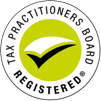In this issue:
Data matching on insured boats, planes, cars and more
Withholding tax for car allowances
Changes to being able to pre-pay tax
Data matching – property sales and rental income
Monthly tax tip
Home office expenses
Data matching on insured boats, planes, cars and more
The ATO has advised that it is working with insurance providers to identify policy owners on a wider range of asset classes.
These include:
- Marine;
- Aviation;
- Enthusiast motor vehicles;
- Fine art; and
- Thoroughbred horses.
It said that this will provide them with a more accurate estimate of tax practitioners’ clients’ wealth, help the ATO to provide tailored services and ensure clients meet their tax obligations.
In January to February the ATO will issue formal notices to insurers to provide it with these policy details.
They advise that they expect to receive 100,000 records where the different asset classes meet certain threshold amount.
Editor: Without knowing what the thresholds are, 100,000 records seems to be a little on the light side.
Still it is better to under-promise and over-achieve, rather than the alternative.
However, there are many, many thousands of expensive boats, planes, cars, fine art and thoroughbred horses.
So those clients who have been salting away their ill gotten or ill taxed monies into these sorts of trinkets may want to seriously consider a call to the taxman before their own phone rings.
Of course, the other side of the coin may be taxpayers who have used their own companies or businesses to buy such assets. The FBT or Division 7A consequences may be painful.
Ref: ATO website – Data matching on insurance asset classes.
Withholding tax for car allowances
The ATO has reminded tax practitioners that from 1 July 2015, car expense deductions for individuals were simplified.
Prior to 1 July 2015, there were four methods for claiming car expenses:
- Cents per kilometre – capped at 5,000 kms
- Logbook – unlimited kms
- 12% of original value
- One-third of actual expenses
To simplify the rules, from 1 July 2015, the government abolished the one-third of actual expenses method and 12% of original value method.
The cents per kilometre method has been simplified to use a standard rate of 66 cents per kilometre for the 2015/16 income year, rather than a rate based on the engine size of the car. The Commissioner will set the rate for future income years.
Employers should be aware that the ATO set the approved pay as you go withholding rate for cents per kilometre car allowances at 66 cents per kilometre from 1 July 2015.
Employers should withhold from any amount above 66 cents for all future payments of car allowance.
Failure to do so may result in the employee having a tax liability when they lodge their tax return.
Employees, who from 1 July 2015 have been paid a car allowance at a rate higher than the new approved amount, should consider whether they need to increase their withholding to avoid any tax liability at the end of the year.
Ref: ATO website – Withholding tax for car allowances.
Changes to being able to pre-pay tax
The ATO has advised practitioners that to make it easier for clients to manage their tax liabilities, they can now pre-pay their activity statement before the due date.
In the past, the ATO automatically refunded credits from early payment. Now, a pre-payment made towards a tax liability before it’s due will remain on a client’s account unless a refund request is made through the Tax or BAS Agent Portal.
Ref: ATO website – Changes to tax pre-payments
Data matching – property sales and rental income
The ATO has advised that it is continuing its ongoing “Real property transactions 1985-2017 data matching protocol”.
It is undertaking this program to basically ensure that taxpayers are correctly meeting taxation obligations in relation to their dealings with real property, i.e., CGT on property sales and income.
For the period 20 September 1985 to 30 June 2017, data will be obtained from all State and Territory Revenue authorities as well as:
- New South Wales Department of Finance & Services – Land and Property Information
- New South Wales Office of Fair Trading – Rental Bond Board
- Residential Tenancies Bond Authority – Consumer Affairs Victoria
- Australian Capital Territory Environment & Planning Directorate
- Northern Territory Department of Lands, Planning and the Environment
- Queensland Residential Tenancies Authority
- Tasmanian Department of Primary Industries, Parks, Water & Environment
- Department of Justice – Tasmania
- South Australian Department of Planning, Transport & Infrastructure – Land Services Group
- Western Australian Land Information Authority – Landgate
The ATO will obtain data on:
- Landlords, properties, rental income, etc., from the rental bond authorities; and
- Taxpayer details on property valuations, sales purchases, etc., from the revenue and land titles authorities.
Number of records
It is estimated the total number of records that will be obtained is:
- Rental bond authorities – 1 million records for each year; and
- Revenue and land title offices – approximately 30 million records for each year.
Based on current data holdings, it is estimated these records identify approximately 11.3 million unique individuals.
Previous programs
This an ongoing data matching program that the ATO has conducted for more than 10 years.
During the 2014/15 financial year, the ATO identified over 8,000 cases where real property dealings had not been treated correctly and raised an additional $161 million in revenue.
Ref: ATO website – Real property transactions 1985-2017 data matching program protocol
MONTHLY TAX TIP – FBT and work-related electronic devices, etc.
The Government has extended the FBT exemption with respect to eligible work-related items that are provided by small business entity employers to their employees. These changes apply from 1 April 2016 (i.e., from the commencement of the 2017 FBT year).
Under the changes, small business entity (‘SBE’) employers will not be limited to providing one eligible work-related item that is a portable electronic device’ (e.g., a laptop computer) to an employee per FBT year (as an expense payment or property benefit) where items have a substantially identical function’.
So if you are an employee of an SBE, you can package a hybrid laptop computer (detachable screen) and a laptop in the same FBT year or a smart phone and a phablet, from 1 April 2016.
FBT WARNING – ‘Work-related use test’ continues to apply
The exemption under S.58X will still only apply where the item is primarily for use in the employee’s employment.
Home office expenses
Expenses associated with the ownership, or running, of an individual’s home are usually private and domestic in nature. However, deductions may be available where part of a home is used for work-related purposes as follows:
- 1. An area of the home is used as a ‘place of business’;
- 2. A room is used as a ‘study’, ‘home office’ or other ‘work area’ as a matter of convenience; and
- 3. No particular area of the home is used, but work is performed at home.
Expenses associated with a dedicated ‘home office’ are usually incurred by individuals working in professional occupations. Where work is done from home or the home is used as a place of business, individuals who are not professionals should also consider whether they are entitled to any deductions e.g. sportspeople.
Note – Areas that are not strictly an ‘office’
It may be possible to deduct expenses associated with other areas of the home if they are used for work-purposes even though they are not strictly a ‘home office’. For example, in PBR 1012404426597 a performing artist was entitled to a deduction for additional running expenses where a bedroom was used to rehearse. However, the individual must establish a sufficient relationship between the outgoing and the gaining or producing of their assessable income.
Summary of different types of expenses deductible
The following table summarises some of the more common work-related expenses associated with working from home and whether those items are deductible based on the types of activity conducted from home.
| Types of expense | Work done at home not in a specific area | Dedicated room used as a study or home office | An area of the home as a place of business |
| Telephone, internet and electronic devices used for work purposes e.g. computers, laptops or tablets and mobile phones | yes | yes | yes |
| Running expenses e.g. electricity, gas and depreciation on items such as furniture, and room furnishings | (only additional costs of utilities and proportion of depreciation on furniture) | yes | yes |
| Occupancy costs e.g. rent, mortgage costs, interest, rates, repairs and maintenance | no | no | yes |
Important – Impact on main residence exemption
An individual who runs a business, or their employer’s business, from a dedicated space in their main residence will not be entitled to the full main residence CGT exemption in Subdiv 118-B. A partial exemption may be available using the same apportionment process as they applied to claim a deduction for the mortgage interest and their occupancy costs. i.e. generally, floor area and time used.
Tip
When an individual first starts to use their home as a place of business, they should obtain a market valuation at that time so that contemporaneous evidence of the market value is available when they later have to calculate the capital gain on the main residence.
What is a ‘place of business’?
Whether an area of a home is a place of business is a question of fact. A place of business is most likely to exist where an area of the home is set aside for carrying on a business by a self-employed person or for use as a taxpayer’s sole base of operations for income producing activities e.g. where no other location is provided to an employee by an employer.
An area that has been set aside in a home will, or is more likely to, have the character of a ‘place of business’ if the area is:
- clearly identifiable as a place of business;
- not readily suitable or adaptable for use for the private or domestic purposes in association with the home generally;
- used exclusively or almost exclusively for carrying on a business; or
- used regularly for visits of clients or customers.
A decision on whether an area has the character of a place of business will depend on the essential character of the area, the nature of the relevant business and any other relevant factors.
A place of business of an employee
An employee may find it difficult to determine whether, as a matter of fact, they are conducting a business from their home. This is because it is the employer’s business which is the relevant business that must be examined. As such, the Commissioner has stated that a place of business will exist for an employee only where:
- it is a requirement inherent in the nature of the taxpayer’s activities that the taxpayer needs a place of business;
- the taxpayer’s circumstances are such that there is no alternative place of business and it was necessary to work from home; and
- the area of the home is used exclusively or almost exclusively for income producing purposes.
When determining whether there is an ‘alternative place of business’, it may be important to consider whether a work space is available at a client’s premises.




